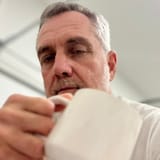Loose & Expressive Landscape Paintings
Explore loose landscape paintings—urban skylines, harbor boats, and nature scenes—created in acrylic, watercolor, and mixed media collage with Robert Joyner’s unique border technique.

Urban grit, quiet but rustic Maine fishing harbors, and just a touch of windswept nature—these paintings lean on acrylic, watercolor, and mixed media collage to bring bold textures and vibrant energy to the canvas. One signature touch is m random collage border technique: I glue torn strips of paper along the edges, then paint patterns—dots, crosshatching, stripes—across them, so the frame becomes part of the art.
Some pieces even start as “rejected” watercolors. A few days later, I’ll return with acrylics, collage, and line work to transform them into layered, expressive landscapes.

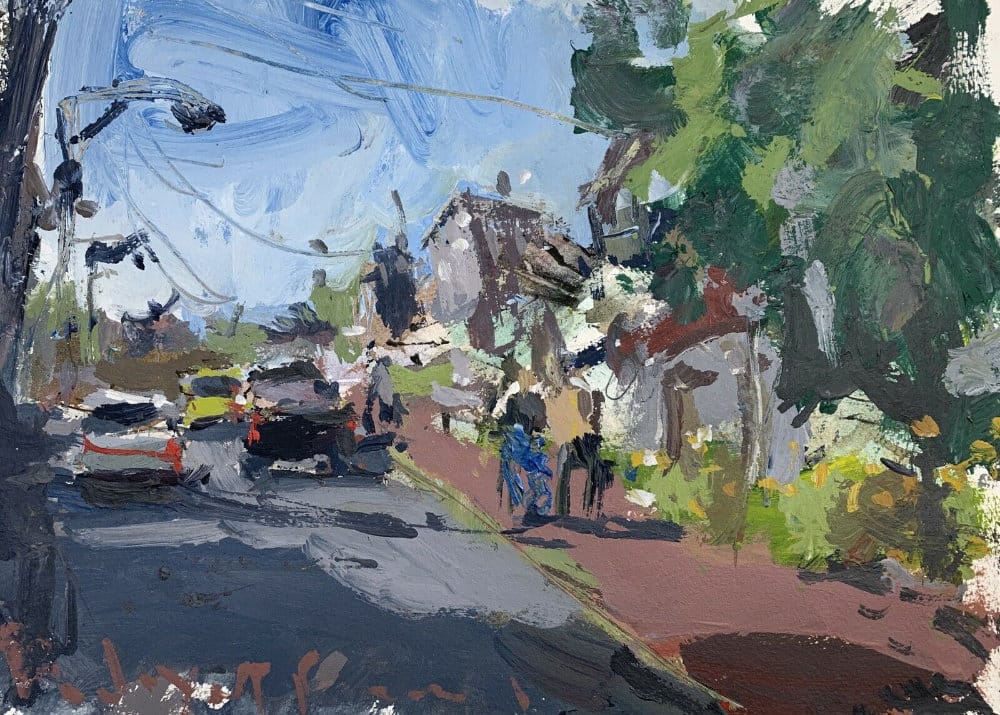
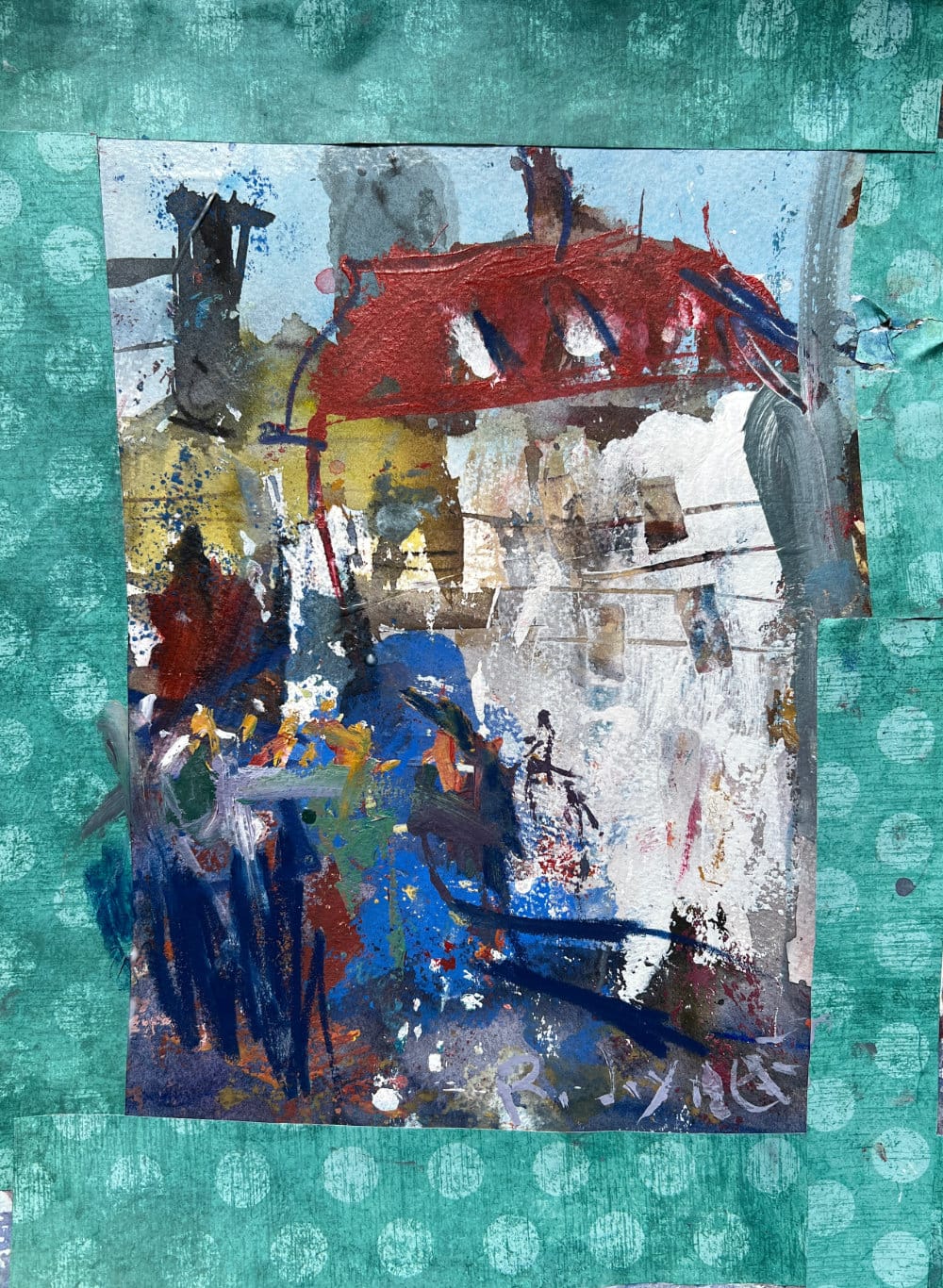
Urban & Cityscape Abstractions
City skylines are perfect for expressive—blocky value masses, windows, and the flow of streets can all be simplified into strong shapes. Tossing in a car, or two, and some figures walking about really bring them to life.
Techniques I use:
- Large flat brush for simplified building masses, pretty common technique for blocking-in a painting
- Acrylic dries fast so I can get the wet-on-dry layering, and this is especially effective if you utilize the transparent qualities of the medium. This adds a sophisticated finish to the art.
- Dry-brush for signage and atmospheric haze, just blobs of paint and very little definition, viewers know what this is
- Graphite marks to mimic street energy, this is seen in the top image. I prefer adding these after the first or second wash
- Love the small detail crayons can add as well, I'll admit to getting away from them lately but they can add a nice touch. This is visible in the lower urban piece
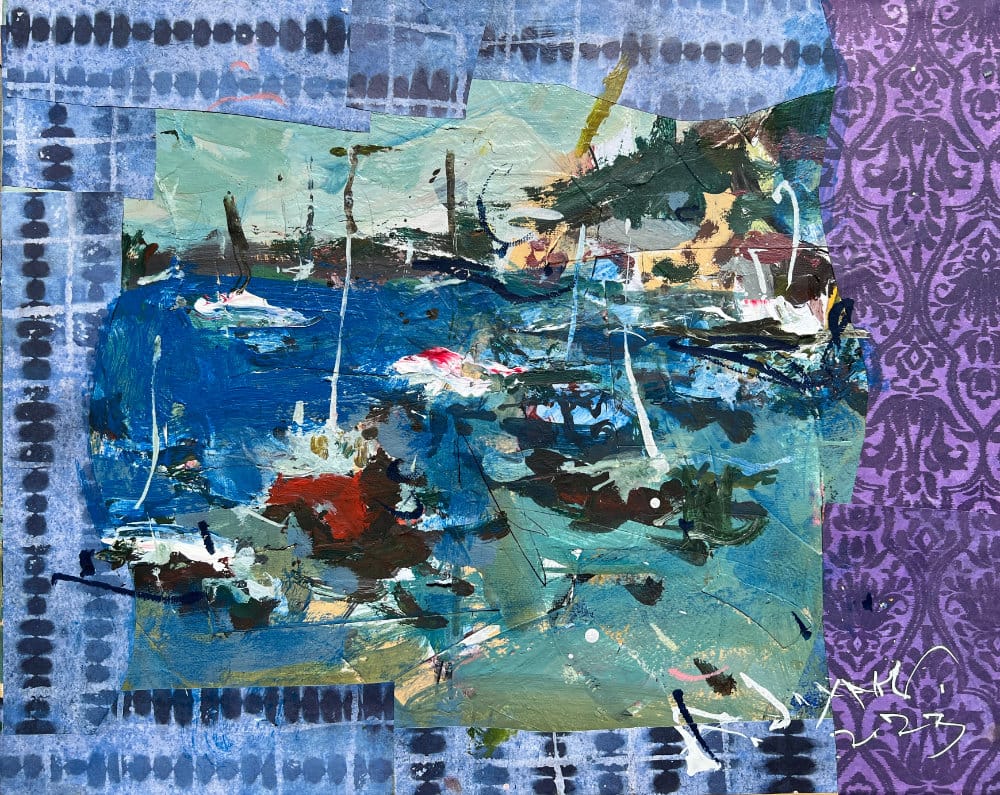
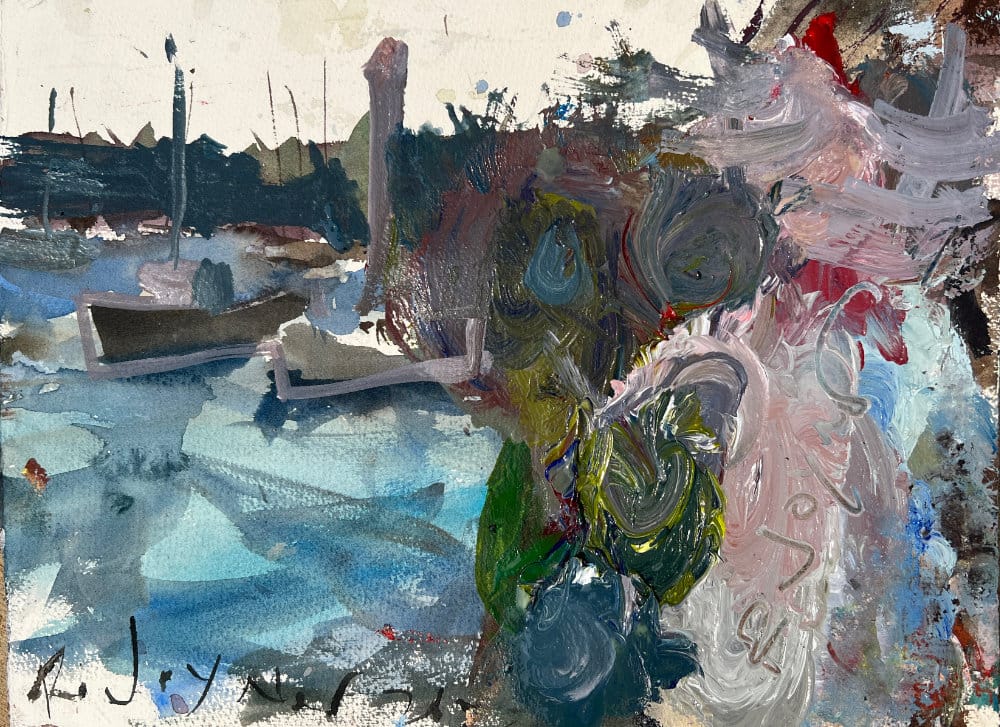
Harbor Scenes with Boats
Masts, hulls, and reflections reduce beautifully into abstract shapes. Love these rugged harbor scenes. I got hooked on them after visiting Maine many times and although I haven't gone in 10 years they still make their way into my subject matter.
Techniques I use:
- Collage border is added on top of reject watercolor, then acrylics are used to paint over top. I tend to use the same painting, so rarely do I change the subject or composition.
- Ultramarine or teal glazes over torn paper
- Negative painting to pull out boat silhouettes, especially in the top piece. I like to go VERY loose in the early stages and use negative space later on to dial-in shapes.
- The bottom piece was a reject watercolor and I used it as a palette which is what you see on the right-hand side. None of that was planned.
Composition tip: Cluster boats off-center, this technique avoids symmetry and placing focus in center of painting.
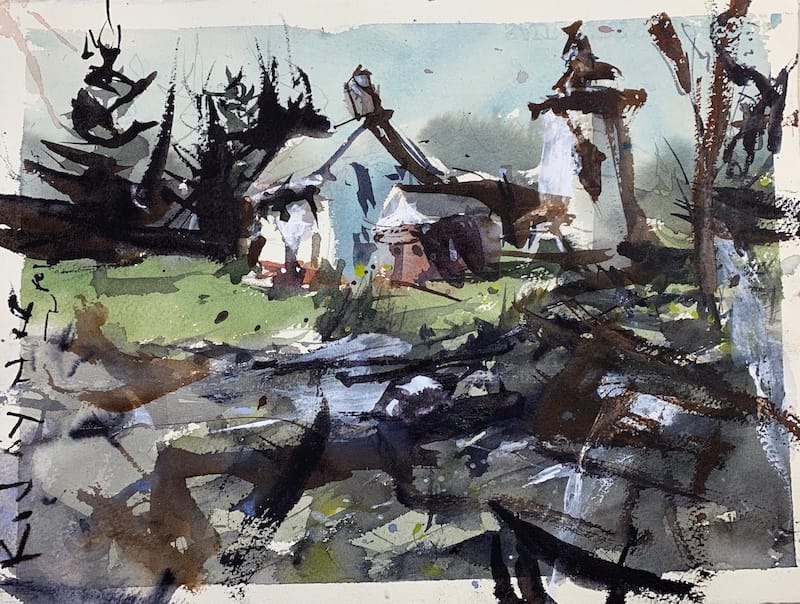
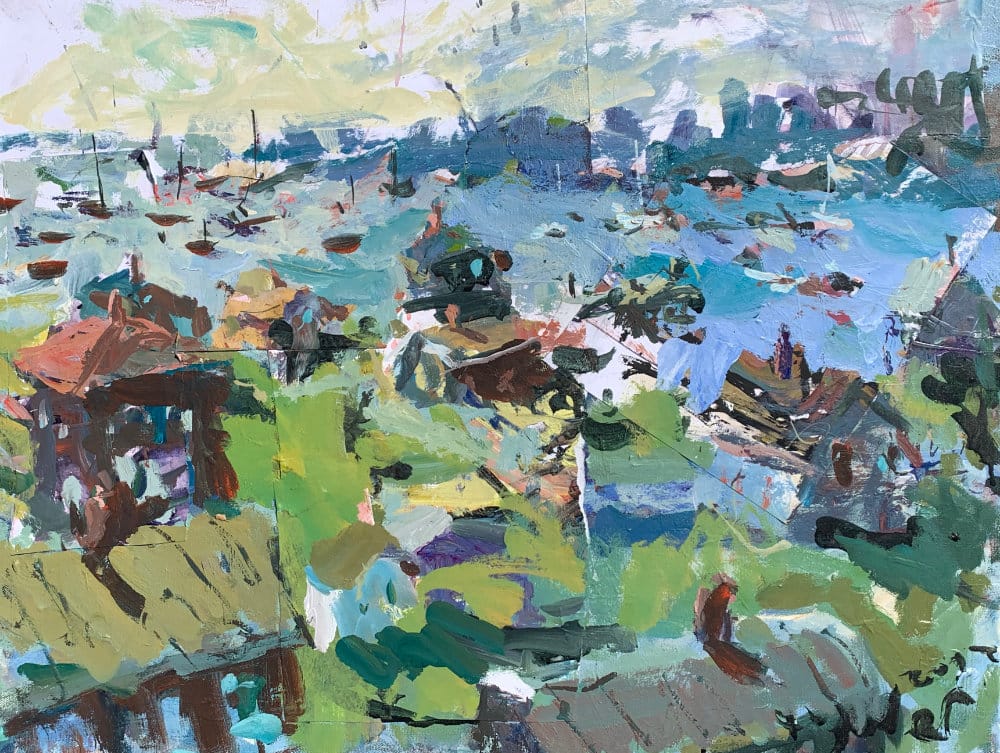
Nature Studies, Minimal & Expressive
From open fields to distant hills, I often treat nature as large color bands—keeping details to a minimum so texture and atmosphere shine. Landscape paintings with only nature don't often make the cut but I'll occasionally do them just to diversify.
Techniques I use:
- Adding thick blobs of acrylic paint then smearing in around with paper, or a blank canvas always results in some unexpected accidents. A great way to achieve randomness without over-blending
- Acrylics work very well over top of watercolors but the key is to allow the watercolor to live in the final piece
- Spatter and pencil lines to break up solid color fields
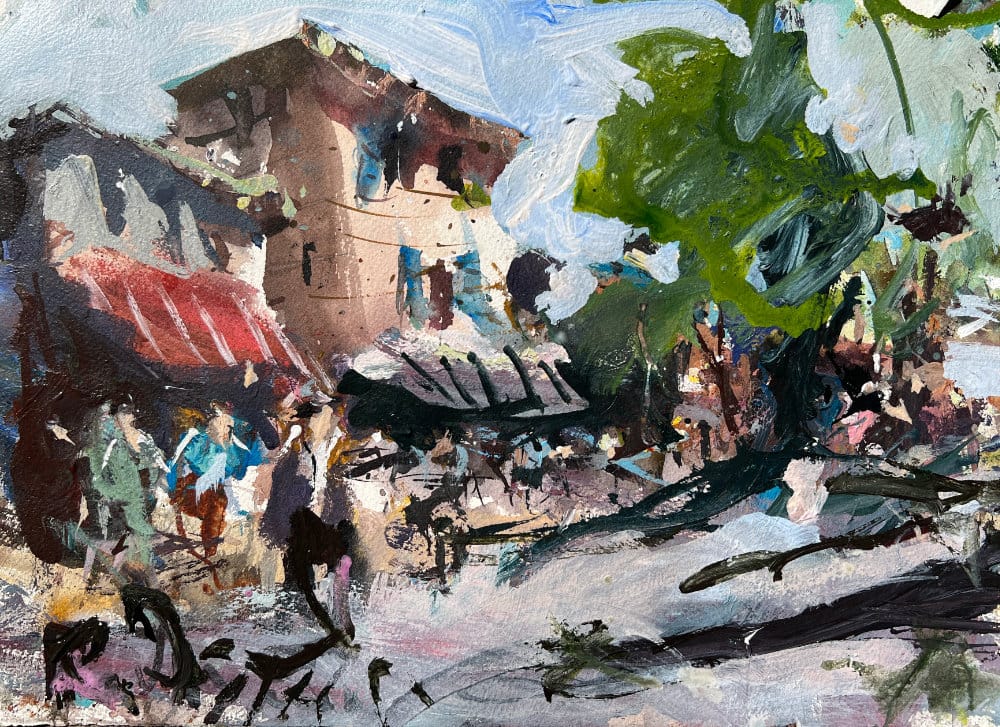

The “Watercolor Rescue” Method
When a watercolor falls flat, I store them in a safe place for later! They eventually become excellent starting points for a mixed media painting. I can't stress how important it is to always KEEP your inferior art, especially if you like laying collage and other mediums into the mix.
- I generally start by going through a stack of rejects then putting aside a handful that appeal to me. It's interesting to revisit these, too. Art that seemed worthless when Ii painted them somehow have this potential later on.
- Add opaque acrylic passages over weaker sections but don't be afraid to use thin layers as well. As I mentioned before this is a great way to add complexity to the work.
- Reintroduce collage and linework for cohesion and excitement. I have many videos on this site you can check out for inspiration.
This process blends the spontaneity of watercolor with the strength of acrylic texture.

Step-by-Step: Collage Border + Pattern
- I start with a reject, usually a watercolor gone bad!
- Select some random collage paper, I use scrapbook paper which I buy from Hobby Lobby, and glue random paper strips to form a border
- Note you don't have to collage all sides, sometimes I only do two of them especially if there's something interesting that I don't want to cover up
- Paint a simple pattern across the border (dots, checks, stripes)
- In the case of the painting above, I stopped with the border and pattern overlay. I liked it, but didi add some white calligraphic strokes to tie in the patterns

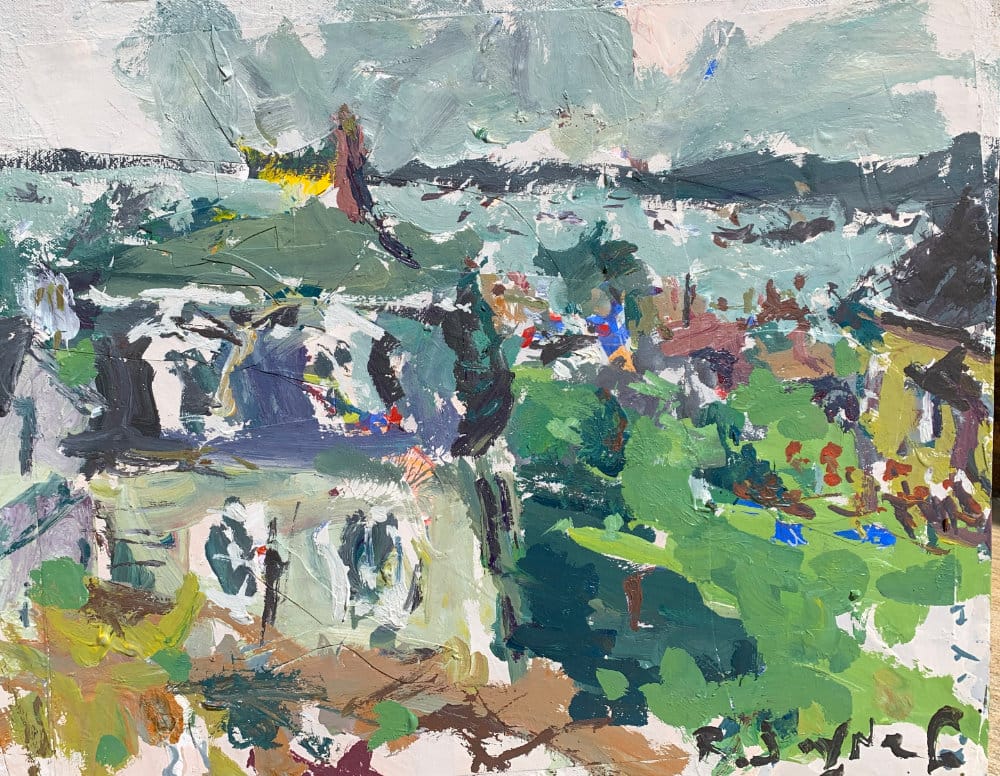
Materials I Use
- Heavy paper or canvas, usually in the 11x15", or 20x16" range
- Matte Mod Lodge glue and an old brush to apply
- Torn collage papers bought from Hobby Lobby, or Michaels (feel free to toss in maps, painted scraps, newsprint)
- Heavy-body acrylics, select Holbein watercolors
- Large flat brushes, medium synthetics, love liners, perhaps some palette knives, graphite pencils

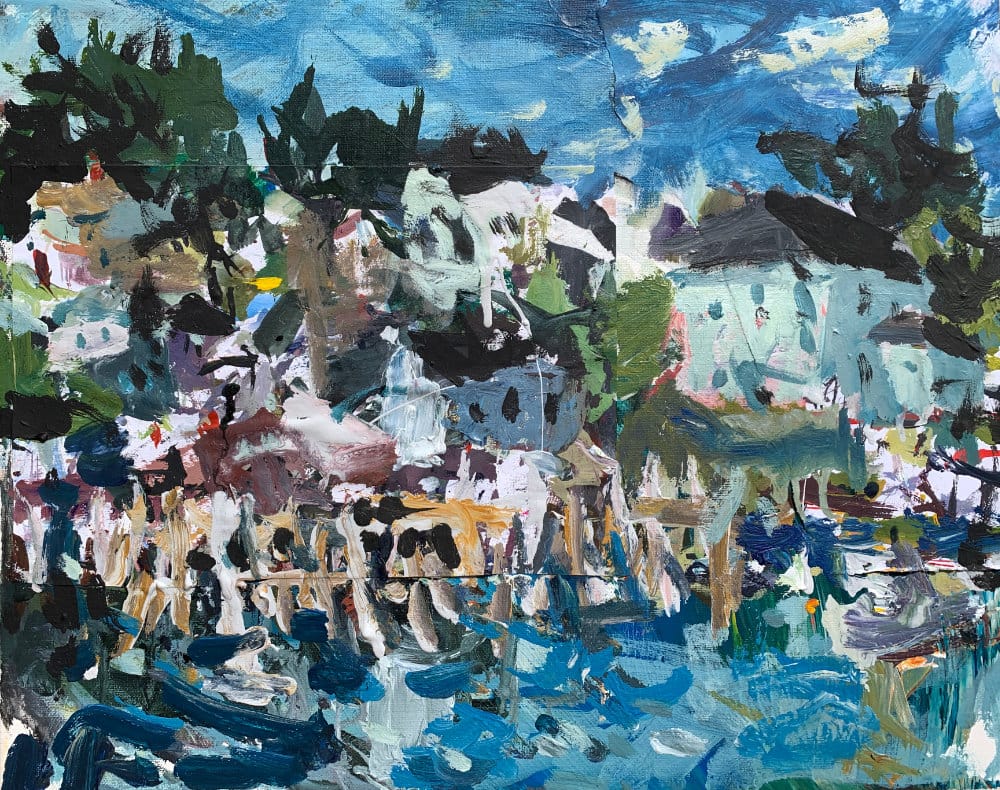
Where to See More
View Available Sports Art →
Commission Paintings Info →
Thanks for having a look and hope you come back often to see what's new!
